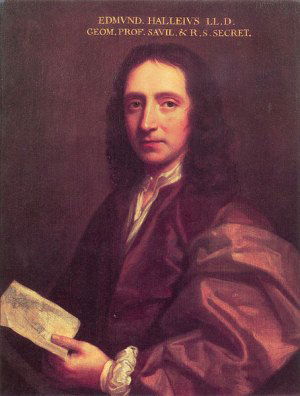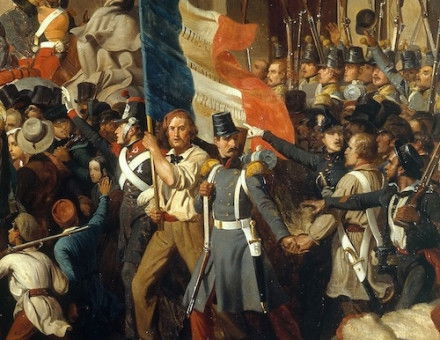Birth of Edmond Halley
The astronomer was born on November 8th 1656.

Shoreditch in 1656 was a suburb of the City of London and the future Astronomer Royal was born there, the first of his parents’ three children. He was born at the right time for his talents and to the right background in a rich and prominent City family. His father was a soapboiler, a member of the Salters’ Company and a freeman of the City. His grandfather had been Master of the Vintners’ Company and an alderman, and the family owned substantial property in the City. The name was presumably pronounced Hawley, which is how it was frequently spelled. His parents seem to have married only two months before his birth, but there is some uncertainty about the exact dates.
The boy went to St Paul’s School, which was burned down in the Great Fire when he was ten. The family went to live in Winchester Street in the City, among a cluster of wealthy and influential neighbours. Halley was already keenly interested in astronomy and mathematics. His mother died in in 1672 and his father married again (he would be murdered in mysterious circumstances in 1684). The son went to the Queen’s College, Oxford, at sixteen in 1673. He published his first scientific papers there, started to collaborate with John Flamsteed, first Astronomer Royal, and made a good impression on Christopher Wren, Robert Hooke and the King.
Like half the undergraduates of the time, Halley left Oxford without bothering to take a degree. He sailed to the island of St Helena in the Atlantic to observe the transit of Mercury across the sun in 1677. As it turned out, the sky was too cloudy to see the transit properly, but Halley was able to determine the positions of the stars in the Southern Hemisphere and in 1679 published his Catalogus stellarum australium, which at the age of twenty-two won him a European reputation.
Sir Alan Cook’s magisterial biography called Halley ‘a large man in a grand time, well able to stand not only with fellow scientists, but with such as Pepys and Evelyn and Wren and Kneller and Dryden and Locke …’. He was midwife to Isaac Newton’s Principia and rich enough to pay for its publication. A leading figure in the Royal Society, he was Savilian Professor of Geometry at Oxford from 1703 and was appointed Astronomer Royal in 1721 when he was sixty-nine. He is best known now for predicting the return of his comet, but he was also an authority on the movements of the stars and the Moon, the Earth’s magnetic field and the tides, while his work on birth and death statistics laid the foundations of actuarial life insurance and annuity tables. He died peacefully at Greenwich in 1742 after a last glass of wine, aged eighty-five. His tombstone hailed him as ‘easily the prince of astronomers of his age’, and his comet did its duty and obediently returned in 1758.




